Monday, December 21, 2015
Sunday, December 06, 2015
Thursday, November 12, 2015
Nicole Landau de Mujer al Pedal
Sol Maria’s childhood friend, Nicole:
Esta mañana estuvimos acompañados de Nicole Landau de Mujer al Pedal en nuestro segmento de #PrimeraHora de Canal 2 compartiendo la experiencia del colectivo de mujeres del Macizo de Peñas Blancas en la elaboración de bicimaquinas. Conocé más de esta iniciativa: http://www.managuafuriosa.com/pedales-ruedas-empoderar/
Thursday, July 30, 2015
One of Sol’s friends was featured in the periodic “Hoy"
“Mujer al pedal”
29-07-2015 - Noticias, Última Hora - No hay comentarios
Un proyecto que será desarrollado en zona de Bosawas
Autor: Melissa Aguilera Montiel
HOY
FUNCIONAMIENTO
- Según Nicole Landau, creadora de la iniciativa, el objetivo es que las bicicletas viejas se puedan reutilizar, entonces las mujeres “al montarse y pedalear no vayan a ningún lado, sino que la fuerza del pedal haga girar para utilizar la licuadora o en lo que se adapte”.
“Mujer al Pedal”. Esta es una iniciativa escrita por Nicole Landau, una joven nicaragüense emprendedora que en octubre comenzará a desarrollar un proyecto de bicimáquinas con el que pretende que mujeres de las zonas rurales del país aprendan otro oficio.
La idea es que por medio del uso de las bicicletas estáticas se pueda lavar ropa, pelar la pulpa de café, desgranar maíz, utilizarla como licuadora e incluso generar energía renovable.
“Queremos capacitar a las mujeres en el diseño y elaboración de bicimáquinas para que ellas cambien sus roles como trabajadoras domésticas y se vean en el papel de diseñadoras de una tecnología innovadora y a la vez renovable, para así poderlas ayudar en sus labores cotidianas”, explicó Landau.
El proyecto de la joven se ejecutará en el Macizo de Peñas Blancas porque considera que es un punto donde se ha dado mucho despale y a través del desarrollo de Mujer al Pedal se puede ayudar a crear conciencia entre la población.
“Este lugar está en la Reserva de Bosawas, que es muy importante para Latinoamérica, por ello creo que es el mejor lugar para empezar con este proyecto que espero se pueda hacer también en muchos lugares de Nicaragua”, dijo Landau.
PREMIO
Nicole podrá ejecutar el proyecto de Mujer al Pedal gracias a un premio que ganó al participar en un concurso llamado Mujeres Ingeniosas, que fue desarrollado por Hivos y la Unión Internacional para la Conservación de la Naturaleza (UICN).
“Yo apliqué para la innovación social y el fondo es de 6,000 euros. Ya con esto vamos a poder desarrollar la iniciativa y empezar los talleres a las personas”, comentó la joven.
El proyecto de Mujer al Pedal tiene dos aspectos: “Uno que es hacia la energía renovable, reutilizar materiales cotidianos, poder generar energía con la fuerza del pedal y también abrir un espacio de diálogo sobre el papel de la mujer en la comunidad”, dijo la joven.
Friday, July 10, 2015
Saturday, June 27, 2015
Sunday, June 14, 2015
Monday, May 18, 2015
Sol Maria and I Visit Access Tucson’s Homeless Program
 Years ago while at an international media conference in Arizona I suggested that an attendee from Norway come with me to visit Access Tucson. It was a lively Saturday afternoon and the former VFW building was full. A hip hop band was just winding up their recording session as a group of bell ringing seniors pulled on their white gloves for their turn in the studio. The hip hop cameraman told us he was staying on to help these “cool ladies” make their program. On the stairway we ran into a guy with a military uniform who was getting ready for his show, Veteran Jews for Jesus. Downstairs we watched a native program producer with a long black braid down his back edit his coverage of a local Pow Wow. We spoke with a woman lawyer who had finished a program giving legal advice for immigrants. The Norwegian professor had never seen anything like this. She was so impressed with these examples of democratic media that she asked the staff whether I had called ahead so they could create a PR set-up. The staff laughed and invited her to come back any day.
Years ago while at an international media conference in Arizona I suggested that an attendee from Norway come with me to visit Access Tucson. It was a lively Saturday afternoon and the former VFW building was full. A hip hop band was just winding up their recording session as a group of bell ringing seniors pulled on their white gloves for their turn in the studio. The hip hop cameraman told us he was staying on to help these “cool ladies” make their program. On the stairway we ran into a guy with a military uniform who was getting ready for his show, Veteran Jews for Jesus. Downstairs we watched a native program producer with a long black braid down his back edit his coverage of a local Pow Wow. We spoke with a woman lawyer who had finished a program giving legal advice for immigrants. The Norwegian professor had never seen anything like this. She was so impressed with these examples of democratic media that she asked the staff whether I had called ahead so they could create a PR set-up. The staff laughed and invited her to come back any day.I visited Tucson several times after that and I can vouch for their years of amazing work. Once Sol Maria and I stopped by on a road trip to NY from San Diego and we witnessed the set-up for an all night homeless program produced on the street across from the center. The center closed at 10 but the access staff left a long cable threaded across the street so the homeless show could operate live. The show even took phone calls via a pay phone outside the bar near their “set”. This photograph is from the next morning. Sol wanted to know if they really went on all night long so we left our motel at the crack of dawn and bought coffee and donuts and stopped by to see if they were still there. They were still on live and let Sol Maria do the "out-fro" for the show!
I just heard today that Access Tucson will close on May 31. This is a terrible loss- not just for Tucson, not just for the US, but for the world as a model of what democratic media can be.
Tuesday, May 05, 2015
Nicaragua Canal: A Giant Project With Huge Environmental Costs
05 MAY 2015

The mouth of the Brito River where it empties into the Pacific Ocean, the proposed western terminus of the Nicaragua Grand Canal.
Work has already begun on a $50 billion inter-ocean canal in Nicaragua that would cut through nature reserves and bring massive dredging and major ship traffic to Central America’s largest lake. Scientists and conservationists are warning that the project is an environmental disaster in the making.
BY CHRIS KRAUL
In a scenic lagoon on Nicaragua’s Brito River, less than a mile from the Pacific Ocean, schoolteacher Jorge Lopez and a friend were fishing on a recent morning. He gestured toward a bend in the narrow river, canopied with arching trees draped in moss, and said, “There are howler monkeys, crocodiles, and parrots all along this waterway. It would be a shame to lose all this.”
 ABOUT THE AUTHOR
ABOUT THE AUTHORChris Kraul is a Bogotá-based freelance writer who covered Central America and South America for nine years for The Los Angeles Times. Previously for Yale Environment 360, he has covered controversies over mining operations in South American páramos and over using primates in medical research. His work on this article was supported by the Pulitzer Center for Crisis Reporting.
MORE BY THIS AUTHOR
What threatens this tranquil spot and many others in Nicaragua is a controversial and wildly ambitious project to build a 173-mile canal — more than three times the length of the Panama Canal — that would connect the Pacific and Atlantic oceans via the Caribbean Sea. The $50 billion canal project is the brainchild of Chinese businessman Wang Jing and has the full support of the Nicaraguan government, which claims that the canal will give a huge boost to the country’s economy, the second poorest in the Western Hemisphere after Haiti.
Many Nicaraguans back the canal project, and preliminary work has already begun — even before the completion of an environmental impact assessment. But other Nicaraguans, as well as local and international scientists, say the canal would be an environmental catastrophe, threatening a host of ecosystems across the country. They say it would also displace tens of thousands of Nicaraguans, including indigenous people whose territories the canal would cross.
The impacts would begin near Lopez’s fishing spot, where a breakwater and giant port — capable of docking supertankers and immense cargo ships carrying 25,000 containers — are planned as the western terminus of the canal. The port infrastructure along Nicaragua’s Pacific coast would threaten mangrove swamps and sea turtle nesting beaches. Then, passing through the remote, hilly coastal region where Lopez fished, the canal, carved to a depth of nearly 100 feet, would continue 16 miles through
agricultural land to Lake Nicaragua, Central America’s largest body of freshwater.
Scientists say the damage to Lake Nicaragua could be enormous. One third of the canal’s total length would traverse the lake, whose average bottom of 40 feet would have to be dredged to nearly twice that depth. The digging in the lake and over the rest of the canal’s proposed route would generate an almost unfathomable quantity of mud and dredging spoils — enough to cover the entire state of Connecticut with one foot of dirt. Silt would cloud the lake’s water column, threatening indigenous fish and other species, scientists warn, and invasive species could make their way into the lake along the canal from the Pacific and the Caribbean.
From Lake Nicaragua, the canal would head east, slicing through remote wetlands, nature reserves, and forests, many of them now inaccessible by road. The canal and related infrastructure could easily be several miles wide, and roads and construction camps would open up large areas of wilderness inhabited by indigenous people, thousands of whom would have to relocate.
On the Caribbean side, the traffic generated by supertankers and cargo ships could threaten sensitive marine ecosystems, including a 250-square-mile Colombian biosphere reserve that includes the second-largest coral reef system in the Caribbean. And the canal would cut in two the so-called Mesoamerican Biological Corridor, a loose network of reserves and other lands that stretches from southern Mexico to Panama and is used by animal species such as jaguars to traverse Central America.
“In our view, this canal would create an environmental disaster in Nicaragua and beyond,” Jorge Huete-Pérez, a biology professor and foreign secretary of the Nicaraguan Academy of Sciences, wrote earlier this year in a joint commentary with a
The scale of the canal is so grand, the price tag so high, the economics so uncertain, the background of Wang Jing so murky, and the potential environmental damage so extensive that many question whether the canal will ever be built. Some skeptics think that rather than building the canal, Wang Jing has set his sights on building nine “sub-projects” that the Nicaraguan government has given him the exclusive right to develop in and around the canal zone. These projects include a major airport near the city of Rivas and a nearby free-trade zone that will resemble the one in Colon, Panama. Wang Jing also has the option of building major tourist resorts on four of nine sites that initially would be used for worker housing camps, including picturesque Ometepe Islandin Lake Nicaragua.
Nevertheless, the canal project continues to move forward. Jing’s company, the Hong Kong Nicaragua Canal Development Group (HKND), in 2013 was granted a renewable 50-year concession to build and operate the canal. The proposal —
aggressively pushed by Nicaraguan President Daniel Ortega, whose son is the liaison to Jing — sailed through the National Assembly with scant debate and no bidding.
“It has more staying power than one might have expected,” said Thomas Lovejoy, a U.S. ecologist at George Mason University who has worked extensively in South America and who has been conferring with Nicaraguan scientists on the canal project. “The way it has been handled by the Nicaraguan government is the opposite of transparent. It’s as opaque as all those sediments that would be rendered in the lake. ... It’s a great example of how bad ideas never go away.”
Victor Campos, director of the Humboldt Center, a leading Nicaraguan environmental think tank based in Managua, raised similar concerns about the lack of transparency and the absence of a comprehensive environmental impact assessment and economic feasibility studies. “We have only partial and incomplete information, even though the proposed canal route would bring incredible consequences,” Campos said.
Many observers also question whether the canal project makes economic sense, given that the Panama Canal is now undergoing a $5.25 billion expansion that would enable it to accommodate more large ships — a key target market of the Nicaraguan venture.
Among the many concerns of scientists and environmentalists is that HKND has commissioned its own environmental assessment, which they contend is being carried out in hurried fashion. Scientists say that the consulting firm doing the work, Environmental Resource Management (ERM), is a respected one, but it has been given little more than a year to carry out an
At a meeting earlier this year with ERM in Miami, an international group of scientists pointedly questioned the firm’s representatives, saying they still lacked basic knowledge on key questions, such as the currents in Lake Nicaragua and the composition of the lake bottom.
“I have been an outspoken critic,” said meeting attendee Axel Meyer, an evolutionary biologist at the University of Konstanz in Germany and co-author of the Nature commentary with Huete-Pérez. “The whole thing is backwards. They’ve settled on a route. They’ve started construction. Yet there is still no environmental impact assessment.”
Yale Environment 360 contacted HKND for comment for this article, but received no response.
The greatest environmental concerns center on the canal’s impact on Lake Nicaragua, which contains 40 endemic fish species, including a rare freshwater shark and 16 kinds of cichlids. The fate of the 3,170-square-mile lake was the main focus of a November meeting in Managua of 15 scientists, including representatives of several academies of science from around the Americas. Researchers were concerned that the lake dredging and the planned 25 daily crossings of huge ships would compromise the lake’s water quality, as could potential fuel spills. The lake currently provides drinking water for some
Nicaraguan towns, and if present trends of rising population growth and declining aquifers continue, more of the country — and perhaps other Central American nations — may be forced to tap the lake for water.
Scientists at the Managua meeting raised questions about where the company will put the 5 billion cubic meters of dredged earth and lake bottom that that canal’s excavation work will create. In a December planning update, HKND said most of the earth will be transferred to 35 “confined disposal facilities” along the three-mile-wide shoulders on either side of the land portion of the canal. One mound of dredged earth would be located in Lake Nicaragua itself, creating an artificial island, HKND says.
But critics such as the Humboldt Center’s Campos wonder about the viability of the dredging plan if the spoils turn out to be toxic. “What could happen is that contaminants like mercury, arsenic, and heavy metals that lie beneath the lake bottom, which were put there by volcanic activity, will be brought to the surface by the digging. This could alter the natural composition of the water.”
Another major question is how much dredging will be necessary to keep the canal’s channel across Lake Nicaragua open. If soft sediment keeps moving back into the channel, then frequent dredging could “really wreak havoc with the food chain and the ability of species to survive,” said Lovejoy.
He and others also are concerned that the canal could open up a corridor for invasive species to travel from the Caribbean to the Pacific, or vice versa, and to bring alien species into Lake Nicaragua. The Panama Canal’s configuration and elevation have created a freshwater barrier that has largely eliminated the invasive species problem there. But researchers say it is unclear if the Nicaraguan canal would be as effective a barrier.
When the canal leaves the eastern side of Lake Nicaragua, it would pass through or near nature reserves and would likely cause major environmental and human upheaval in many remote regions of eastern Nicaragua, critics warn. The current canal route would follow the border between two adjoining nature preserves, Cerro Silva and Indio Maiz. These highly biodiverse reserves
A little-developed river in eastern Nicaragua, the Punta Gorda, would also become part of the canal. And roads would spring up throughout the region, which would likely lead to settlers, forest clearing, poaching of wildlife, and loss of biodiversity.
“You have to have access for construction,” said Meyer, who has worked in Nicaragua and other parts of Central America. “They have to have roads in some areas where there are no roads. How do you keep people from settling there? Of course roads are always the beginning. ... It’s just like in the Amazon or Africa. As soon as you have roads, people will come.”
In addition, HKND is planning to create a 152-square-mile reservoir in eastern Nicaragua called Lake Atlanta, which would extend into both the Cerro Silva and Indio Maiz reserves. The lake would be used to store water to fill the locks planned for the canal’s Caribbean side. But scientists warn that the reservoir would siphon off water from the San Juan and Punta Gorda river basins. Reduced water flows and added sediment from dredging could affect the morphology of the rivers and especially be felt on the heavily transited San Juan, part of which runs along the border with Costa Rica. Should rainfall patterns change as the climate warms, there may be insufficient water to fill the canal and its locks and also meet Nicaragua’s water needs, scientists say.
The proposed canal would also run alongside the 166-square-mile San Miguelito wetlands, a biodiverse latticework of marshes and rivers on the eastern shore of Lake Nicaragua, recognized by the Ramsar Convention on Wetlands. Ship traffic could affect
the marshland’s ecology and disturb the 80-plus species of birds that inhabit San Miguelito, a treasured destination for birdwatchers.
The canal’s impacts will almost certainly be felt beyond Nicaragua’s borders. Ninety miles off the coast of Nicaragua is the Seaflower Biosphere Reserve, a large marine reserve that boasts the Caribbean’s second-largest coral reef network.
Changes in water quality, transparency, and temperature could cause the Seaflower ecosystem to “collapse,” according to Francisco Arias Isaza, director of Invemar, an oceanographic research agency funded by the Colombian government. “A new canal of the magnitude they are talking about would funnel huge cargo ships to the area, and that worries us,” he said.
Scientists worry not only about what the project could do to the environment, but what the environment could do to the canal. Nicaragua is the scene of frequent seismic and volcanic activity and is in the pathway of Caribbean hurricanes, factors that persuaded the U.S. government to bypass Nicaragua and instead select Panama, which is off the hurricane track, as the site of the famous waterway built early last century.
“Nicaragua has experienced at least four Class 4 or greater hurricanes since 1855,” said Bob Stallard, a hydrology expert with the U.S. Geological Survey, who has studied the effect of storms on the Panama Canal for 30 years. “The cost of fixing damage [to the canal] could be as much as building the thing in the first place.”
The last major storm to hit Nicaragua’s Caribbean coast, Hurricane Mitch in 1998, killed 3,800 Nicaraguans and inflicted $1 billion in damage. The canal’s planned Caribbean port, Punta Gorda, suffered major damage.
For most Nicaraguans, environmental concerns about the canal run a distant second to the economic stimulus that President Daniel Ortega has promised the canal would deliver. He has described the project as a booster rocket that will launch Nicaragua toward economic prosperity.
Ernesto Salinas, a carpenter, lives in the small town of Tola near the canal’s Pacific terminus. His pueblo is in the path of the canal and would have to be relocated. He thinks that overall the canal is a good idea because it will bring “more jobs, less
According to Telemaco Talavera, a spokesman for the Nicaragua Interoceanic Canal Authority, the waterway and related “sub-projects” will add 50 percent to the country’s economic base and boost the economy’s annual growth rate to twice the current 4 percent.
Benjamin Lanzas, head of a Managua engineering company and president of the Nicaraguan Chamber of Construction, said the project could deliver much-needed public infrastructure that would stimulate development across the country and have a “multiplier effect” on economic growth.
“We need better roads, better airports, better Internet, better tourist attractions, better everything,” said Lanzas. “For example, this project will include two deepwater ports which we don’t have, one on the Pacific and one on the Atlantic.”
Lanzas insisted the environmental damage caused by the construction will be “minimal.” But, he added, “If I have to run over a little frog for this project to go forward and create jobs, I will.”
Critics say the talk of an economic windfall is highly speculative, particularly in light of the fact that HKND has yet to make public an economic feasibility study.
“What I’m afraid of is that the government is placing commercial interests above the nation’s environmental well-being,” said scientist Huete-Pérez.
Monica Lopez Baltodano, an environmental attorney with the Popol Na civil society group that advocates for indigenous rights, claims that Wang Jing failed to consult with native communities in the path of the proposed canal — a violation of the Nicaraguan constitution. But canal backers say special laws passed by the National Assembly gave HKND the right to build
on native lands previously designated as quasi-sovereign. Estimates of how many residents would be displaced by canal construction run from 30,000 to more than 100,000 people.
“By international standards, HKND hasn’t presented even 1 percent of the information to the public that it should, and there is uncertainty about whether it ever will,” Lopez Baltodano said in an interview. “We’re talking about the transfer of national territory to a private investor with very few limits on what he can do.”
ERM, the project’s consulting firm, said in an email that it has conducted 2,000 “household surveys” and has “consulted closely with indigenous communities.”
Yet Joe Kiesecker, a scientist with The Nature Conservancy, faulted the lack of an in-depth, independently funded environmental impact assessment (EIA). Such a study, he said, would enable the public to “see what the future looks like if a development goes forward and what you can do to minimize negative biodiversity, social, and cultural impacts.” The EIA for a project this size, which will have huge direct and indirect effects, should have been started a decade earlier, he said.
Asked why the canal’s planning has gone forward without the usual public hearings and studies in hand, canal authority president Manuel Coronel Kautz said it was due to stipulations agreed upon by the Nicaraguan government and Wang Jing.
“We discussed doing studies first — some in the National Assembly wanted that,” said Kautz. “But if we waited for the last letter of the studies to be completed it could mean up to four years of waiting. The other factor was cost. There was no way Wang Jing was going to invest $300 million in studies without the security of having the concession in hand. So we thought we would do a parallel process.”
With so many questions hanging over the canal, many observers wonder if it will ever become reality. Huete-Pérez remains one of the doubters, noting that when scientists asked HKND if it had studied Lake Nicaragua’s currents and the composition of its lake bottom, the company replied that such studies were unnecessary.
“That made me wonder,” recalls Huete-Pérez, “if this was a serious project.”
This article is a joint project between Yale Environment 360 and Chinadialogue, with support from the Pulitzer Center on Crisis Reporting.
Many Nicaraguans back the canal project, and preliminary work has already begun — even before the completion of an environmental impact assessment. But other Nicaraguans, as well as local and international scientists, say the canal would be an environmental catastrophe, threatening a host of ecosystems across the country. They say it would also displace tens of thousands of Nicaraguans, including indigenous people whose territories the canal would cross.
The impacts would begin near Lopez’s fishing spot, where a breakwater and giant port — capable of docking supertankers and immense cargo ships carrying 25,000 containers — are planned as the western terminus of the canal. The port infrastructure along Nicaragua’s Pacific coast would threaten mangrove swamps and sea turtle nesting beaches. Then, passing through the remote, hilly coastal region where Lopez fished, the canal, carved to a depth of nearly 100 feet, would continue 16 miles through
Chris Kraul
Schoolteacher Jorge Lopez, shown on the banks of the Brito River, opposes the Nicaragua canal project.
Scientists say the damage to Lake Nicaragua could be enormous. One third of the canal’s total length would traverse the lake, whose average bottom of 40 feet would have to be dredged to nearly twice that depth. The digging in the lake and over the rest of the canal’s proposed route would generate an almost unfathomable quantity of mud and dredging spoils — enough to cover the entire state of Connecticut with one foot of dirt. Silt would cloud the lake’s water column, threatening indigenous fish and other species, scientists warn, and invasive species could make their way into the lake along the canal from the Pacific and the Caribbean.
From Lake Nicaragua, the canal would head east, slicing through remote wetlands, nature reserves, and forests, many of them now inaccessible by road. The canal and related infrastructure could easily be several miles wide, and roads and construction camps would open up large areas of wilderness inhabited by indigenous people, thousands of whom would have to relocate.
On the Caribbean side, the traffic generated by supertankers and cargo ships could threaten sensitive marine ecosystems, including a 250-square-mile Colombian biosphere reserve that includes the second-largest coral reef system in the Caribbean. And the canal would cut in two the so-called Mesoamerican Biological Corridor, a loose network of reserves and other lands that stretches from southern Mexico to Panama and is used by animal species such as jaguars to traverse Central America.
“In our view, this canal would create an environmental disaster in Nicaragua and beyond,” Jorge Huete-Pérez, a biology professor and foreign secretary of the Nicaraguan Academy of Sciences, wrote earlier this year in a joint commentary with a
The canal proposal was pushed by President Daniel Ortega and sailed through the National Assembly with scant debate and no bidding.German colleague in Nature. “The excavation of hundreds of kilometers from coast-to-coast will destroy around 400,000 hectares of rainforests and wetlands. The accompanying development could imperil surrounding ecosystems.”
The scale of the canal is so grand, the price tag so high, the economics so uncertain, the background of Wang Jing so murky, and the potential environmental damage so extensive that many question whether the canal will ever be built. Some skeptics think that rather than building the canal, Wang Jing has set his sights on building nine “sub-projects” that the Nicaraguan government has given him the exclusive right to develop in and around the canal zone. These projects include a major airport near the city of Rivas and a nearby free-trade zone that will resemble the one in Colon, Panama. Wang Jing also has the option of building major tourist resorts on four of nine sites that initially would be used for worker housing camps, including picturesque Ometepe Islandin Lake Nicaragua.
Nevertheless, the canal project continues to move forward. Jing’s company, the Hong Kong Nicaragua Canal Development Group (HKND), in 2013 was granted a renewable 50-year concession to build and operate the canal. The proposal —
Yale Environment 360
The route of the canal cuts through Nicaragua from the Pacific Ocean to the Caribbean Sea.
“It has more staying power than one might have expected,” said Thomas Lovejoy, a U.S. ecologist at George Mason University who has worked extensively in South America and who has been conferring with Nicaraguan scientists on the canal project. “The way it has been handled by the Nicaraguan government is the opposite of transparent. It’s as opaque as all those sediments that would be rendered in the lake. ... It’s a great example of how bad ideas never go away.”
Victor Campos, director of the Humboldt Center, a leading Nicaraguan environmental think tank based in Managua, raised similar concerns about the lack of transparency and the absence of a comprehensive environmental impact assessment and economic feasibility studies. “We have only partial and incomplete information, even though the proposed canal route would bring incredible consequences,” Campos said.
Many observers also question whether the canal project makes economic sense, given that the Panama Canal is now undergoing a $5.25 billion expansion that would enable it to accommodate more large ships — a key target market of the Nicaraguan venture.
Among the many concerns of scientists and environmentalists is that HKND has commissioned its own environmental assessment, which they contend is being carried out in hurried fashion. Scientists say that the consulting firm doing the work, Environmental Resource Management (ERM), is a respected one, but it has been given little more than a year to carry out an
The whole thing is backwards. … They’ve started construction. Yet there is still no environmental impact assessment.’environmental assessment that should take at least several years to complete. ERM’s report on the canal is due later this month.
At a meeting earlier this year with ERM in Miami, an international group of scientists pointedly questioned the firm’s representatives, saying they still lacked basic knowledge on key questions, such as the currents in Lake Nicaragua and the composition of the lake bottom.
“I have been an outspoken critic,” said meeting attendee Axel Meyer, an evolutionary biologist at the University of Konstanz in Germany and co-author of the Nature commentary with Huete-Pérez. “The whole thing is backwards. They’ve settled on a route. They’ve started construction. Yet there is still no environmental impact assessment.”
Yale Environment 360 contacted HKND for comment for this article, but received no response.
The greatest environmental concerns center on the canal’s impact on Lake Nicaragua, which contains 40 endemic fish species, including a rare freshwater shark and 16 kinds of cichlids. The fate of the 3,170-square-mile lake was the main focus of a November meeting in Managua of 15 scientists, including representatives of several academies of science from around the Americas. Researchers were concerned that the lake dredging and the planned 25 daily crossings of huge ships would compromise the lake’s water quality, as could potential fuel spills. The lake currently provides drinking water for some
Getty Images
Wang Jing, president of the Chinese company HKND, won support from Nicaraguan President Daniel Ortega (left).
Scientists at the Managua meeting raised questions about where the company will put the 5 billion cubic meters of dredged earth and lake bottom that that canal’s excavation work will create. In a December planning update, HKND said most of the earth will be transferred to 35 “confined disposal facilities” along the three-mile-wide shoulders on either side of the land portion of the canal. One mound of dredged earth would be located in Lake Nicaragua itself, creating an artificial island, HKND says.
But critics such as the Humboldt Center’s Campos wonder about the viability of the dredging plan if the spoils turn out to be toxic. “What could happen is that contaminants like mercury, arsenic, and heavy metals that lie beneath the lake bottom, which were put there by volcanic activity, will be brought to the surface by the digging. This could alter the natural composition of the water.”
Another major question is how much dredging will be necessary to keep the canal’s channel across Lake Nicaragua open. If soft sediment keeps moving back into the channel, then frequent dredging could “really wreak havoc with the food chain and the ability of species to survive,” said Lovejoy.
He and others also are concerned that the canal could open up a corridor for invasive species to travel from the Caribbean to the Pacific, or vice versa, and to bring alien species into Lake Nicaragua. The Panama Canal’s configuration and elevation have created a freshwater barrier that has largely eliminated the invasive species problem there. But researchers say it is unclear if the Nicaraguan canal would be as effective a barrier.
When the canal leaves the eastern side of Lake Nicaragua, it would pass through or near nature reserves and would likely cause major environmental and human upheaval in many remote regions of eastern Nicaragua, critics warn. The current canal route would follow the border between two adjoining nature preserves, Cerro Silva and Indio Maiz. These highly biodiverse reserves
The canal would run alongside the San Miguelito wetlands, a biodiverse latticework of marshlands and rivers.total 2,600 square miles and include swamps, rain forests, and pristine Caribbean coastal mangroves. They harbor cat species such as jaguars, ocelots, and mountain lions, as well as numerous species of birds, including the harpy eagle.
A little-developed river in eastern Nicaragua, the Punta Gorda, would also become part of the canal. And roads would spring up throughout the region, which would likely lead to settlers, forest clearing, poaching of wildlife, and loss of biodiversity.
“You have to have access for construction,” said Meyer, who has worked in Nicaragua and other parts of Central America. “They have to have roads in some areas where there are no roads. How do you keep people from settling there? Of course roads are always the beginning. ... It’s just like in the Amazon or Africa. As soon as you have roads, people will come.”
In addition, HKND is planning to create a 152-square-mile reservoir in eastern Nicaragua called Lake Atlanta, which would extend into both the Cerro Silva and Indio Maiz reserves. The lake would be used to store water to fill the locks planned for the canal’s Caribbean side. But scientists warn that the reservoir would siphon off water from the San Juan and Punta Gorda river basins. Reduced water flows and added sediment from dredging could affect the morphology of the rivers and especially be felt on the heavily transited San Juan, part of which runs along the border with Costa Rica. Should rainfall patterns change as the climate warms, there may be insufficient water to fill the canal and its locks and also meet Nicaragua’s water needs, scientists say.
The proposed canal would also run alongside the 166-square-mile San Miguelito wetlands, a biodiverse latticework of marshes and rivers on the eastern shore of Lake Nicaragua, recognized by the Ramsar Convention on Wetlands. Ship traffic could affect
Wikimedia Commons
The canal would pass through sensitive wetlands and nature reserves, impacting wildlife such as toucans.
The canal’s impacts will almost certainly be felt beyond Nicaragua’s borders. Ninety miles off the coast of Nicaragua is the Seaflower Biosphere Reserve, a large marine reserve that boasts the Caribbean’s second-largest coral reef network.
Changes in water quality, transparency, and temperature could cause the Seaflower ecosystem to “collapse,” according to Francisco Arias Isaza, director of Invemar, an oceanographic research agency funded by the Colombian government. “A new canal of the magnitude they are talking about would funnel huge cargo ships to the area, and that worries us,” he said.
Scientists worry not only about what the project could do to the environment, but what the environment could do to the canal. Nicaragua is the scene of frequent seismic and volcanic activity and is in the pathway of Caribbean hurricanes, factors that persuaded the U.S. government to bypass Nicaragua and instead select Panama, which is off the hurricane track, as the site of the famous waterway built early last century.
“Nicaragua has experienced at least four Class 4 or greater hurricanes since 1855,” said Bob Stallard, a hydrology expert with the U.S. Geological Survey, who has studied the effect of storms on the Panama Canal for 30 years. “The cost of fixing damage [to the canal] could be as much as building the thing in the first place.”
The last major storm to hit Nicaragua’s Caribbean coast, Hurricane Mitch in 1998, killed 3,800 Nicaraguans and inflicted $1 billion in damage. The canal’s planned Caribbean port, Punta Gorda, suffered major damage.
For most Nicaraguans, environmental concerns about the canal run a distant second to the economic stimulus that President Daniel Ortega has promised the canal would deliver. He has described the project as a booster rocket that will launch Nicaragua toward economic prosperity.
Ernesto Salinas, a carpenter, lives in the small town of Tola near the canal’s Pacific terminus. His pueblo is in the path of the canal and would have to be relocated. He thinks that overall the canal is a good idea because it will bring “more jobs, less
For most Nicaraguans, environmental concerns run a distant second to the promised economic stimulus that the canal would deliver.poverty” to his agricultural community, where plantains and beans are the money crops. “Bring it on,” he said. His main concern is when and how much the developer will reimburse him for the 500-acre farm his family owns along the canal route.
According to Telemaco Talavera, a spokesman for the Nicaragua Interoceanic Canal Authority, the waterway and related “sub-projects” will add 50 percent to the country’s economic base and boost the economy’s annual growth rate to twice the current 4 percent.
Benjamin Lanzas, head of a Managua engineering company and president of the Nicaraguan Chamber of Construction, said the project could deliver much-needed public infrastructure that would stimulate development across the country and have a “multiplier effect” on economic growth.
“We need better roads, better airports, better Internet, better tourist attractions, better everything,” said Lanzas. “For example, this project will include two deepwater ports which we don’t have, one on the Pacific and one on the Atlantic.”
Lanzas insisted the environmental damage caused by the construction will be “minimal.” But, he added, “If I have to run over a little frog for this project to go forward and create jobs, I will.”
Critics say the talk of an economic windfall is highly speculative, particularly in light of the fact that HKND has yet to make public an economic feasibility study.
“What I’m afraid of is that the government is placing commercial interests above the nation’s environmental well-being,” said scientist Huete-Pérez.
Monica Lopez Baltodano, an environmental attorney with the Popol Na civil society group that advocates for indigenous rights, claims that Wang Jing failed to consult with native communities in the path of the proposed canal — a violation of the Nicaraguan constitution. But canal backers say special laws passed by the National Assembly gave HKND the right to build
Canterbury/Flickr
Lake Nicaragua would undergo major dredging to make the canal navigable for large ships.
“By international standards, HKND hasn’t presented even 1 percent of the information to the public that it should, and there is uncertainty about whether it ever will,” Lopez Baltodano said in an interview. “We’re talking about the transfer of national territory to a private investor with very few limits on what he can do.”
ERM, the project’s consulting firm, said in an email that it has conducted 2,000 “household surveys” and has “consulted closely with indigenous communities.”
Yet Joe Kiesecker, a scientist with The Nature Conservancy, faulted the lack of an in-depth, independently funded environmental impact assessment (EIA). Such a study, he said, would enable the public to “see what the future looks like if a development goes forward and what you can do to minimize negative biodiversity, social, and cultural impacts.” The EIA for a project this size, which will have huge direct and indirect effects, should have been started a decade earlier, he said.
Asked why the canal’s planning has gone forward without the usual public hearings and studies in hand, canal authority president Manuel Coronel Kautz said it was due to stipulations agreed upon by the Nicaraguan government and Wang Jing.
“We discussed doing studies first — some in the National Assembly wanted that,” said Kautz. “But if we waited for the last letter of the studies to be completed it could mean up to four years of waiting. The other factor was cost. There was no way Wang Jing was going to invest $300 million in studies without the security of having the concession in hand. So we thought we would do a parallel process.”
With so many questions hanging over the canal, many observers wonder if it will ever become reality. Huete-Pérez remains one of the doubters, noting that when scientists asked HKND if it had studied Lake Nicaragua’s currents and the composition of its lake bottom, the company replied that such studies were unnecessary.
“That made me wonder,” recalls Huete-Pérez, “if this was a serious project.”
This article is a joint project between Yale Environment 360 and Chinadialogue, with support from the Pulitzer Center on Crisis Reporting.
Monday, April 13, 2015
Saturday, April 04, 2015
Nicaraguan Farmers Unite to Fight the Canal
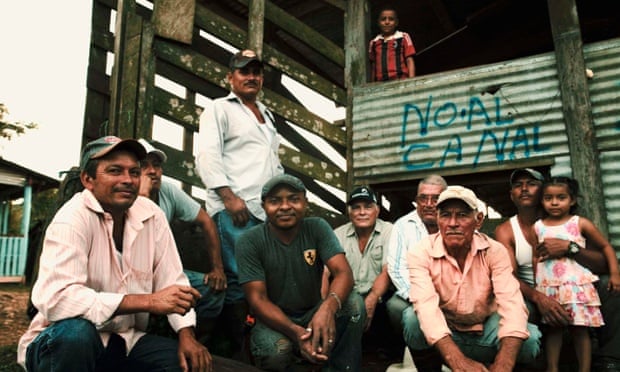
Nehemiah Stark
La Uniòn is a 2,000-person farming community in Nicaragua. It is slated, along with other communities, to be sacrificed to industrial progress at the hands of the Hong Kong-funded Grand Canal, the largest construction project in the history of the world.
Some of the farmers living there fought against President Daniel Ortega in the war that tore through Nicaragua in the 1980s. During that war, Ortega called himself a fighter “against the domination [by] the capitalists of our country”.
I went to La Uniòn to hear the stories of these farmers, and to photograph a community on the edge of disappearance. People were willing to unite with Sandinista farmers, their former enemies, in the struggle against the Canal. This struggle pits Ortega’s government, the canal’s profiteers, and most of the urban population against the farmers.
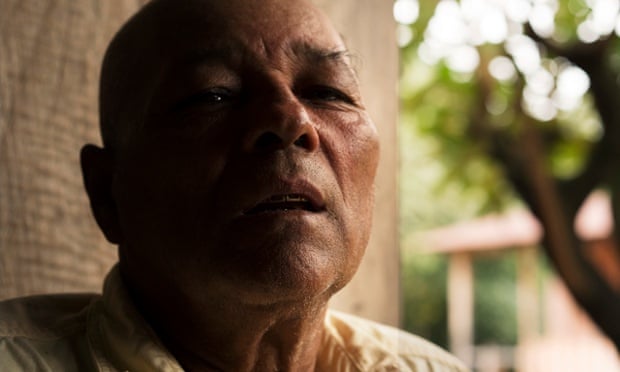
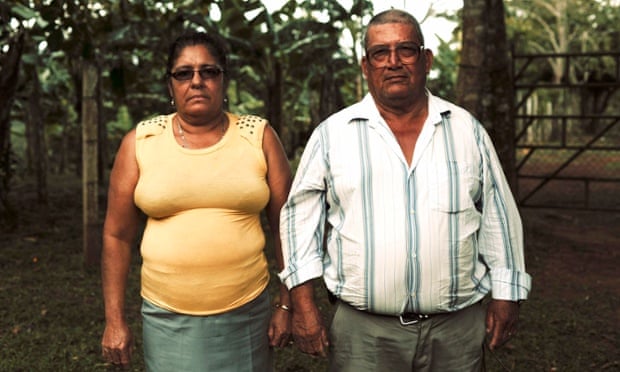

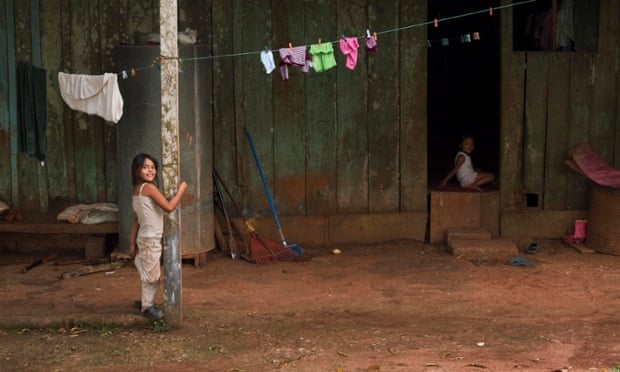
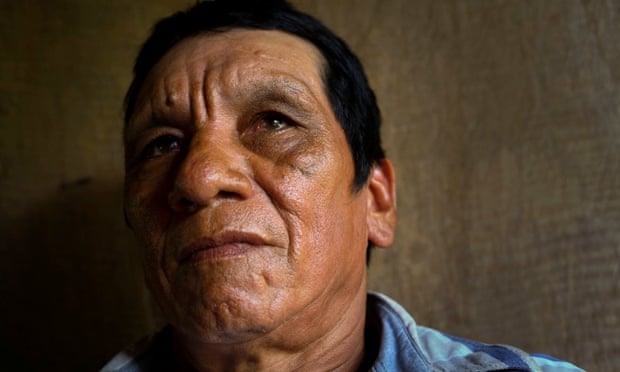
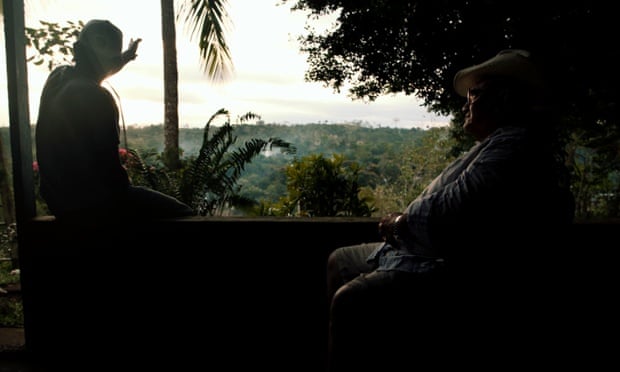
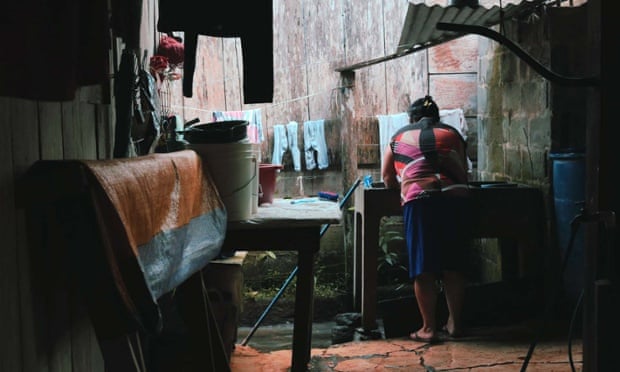

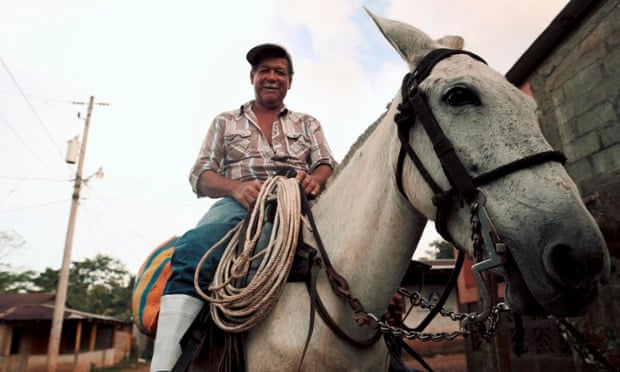

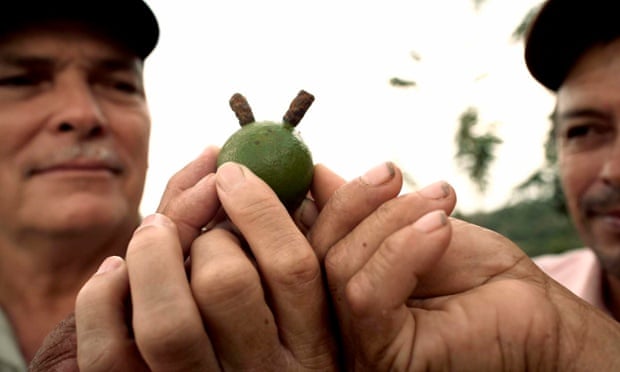
Labels:
Canal,
Contras,
farms,
La Union,
Leonardo Escobar Escamoro,
Nicaragua,
Sandinistas
Subscribe to:
Posts (Atom)














